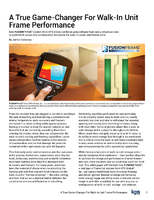NTSB Determines Separate Causes of OK crash, passengers' injuries.
Share:
Press Release Summary:
As determined by National Transportation Safety Board (NTSB), truck-tractor driver's use of synthetic cannabinoid resulted in his crash with medium-sized bus that consequently killed 4 members of North Central Texas College softball team that were not wearing seatbelts. NTSB issued several recommendations addressing impairing substances not tested for under federal regulations and called upon states to require seat belt use for all vehicle seating positions equipped with belts.
Original Press Release:
NTSB Determines Driver's Likely Use of Synthetic Drug Caused Oklahoma Crash, Passengers Failure to Wear Seat Belts Contributed to Injuries
WASHINGTON – The National Transportation Safety Board (NTSB) today determined that the driver of a truck-tractor that struck a medium-size bus, killing four members of the North Central Texas College softball team, lost control of his vehicle due to incapacitation stemming from his likely use of a synthetic cannabinoid. Synthetic cannabinoids are chemical compounds that are marketed as allegedly legal alternatives to marijuana; however, their effects can be considerably worse and they have been known to cause psychosis, seizures, and nonresponsiveness.
The driver, who had a documented history of drug use, was operating a truck-tractor with a semitrailer northbound on I-35 near Davis, OK. After negotiating a slight rightward curve, the truck departed the left lane, continued across the 100-foot-wide median, and traveled more than 1,100 feet before striking the medium-size bus in the southbound lane of I-35. Four bus passengers died and five were seriously injured. Six additional bus passengers and both drivers sustained minor injuries.
Federal law prohibits commercial motor vehicle drivers from operating a vehicle while impaired. However, federal regulations require testing for only a few impairing substances. This crash investigation highlights the challenges that employers and law enforcement face in detecting driver use of impairing substances for which testing is not required.
“Motor carriers need to know about this emerging class of drugs, and they need better tools to detect driver impairment,” said NTSB Chairman Christopher A. Hart.
As a result of the investigation, the NTSB issued recommendations addressing impairing substances that are not tested for under federal regulations.
Contributing to the severity of the crash was the fact that, although the bus was equipped with seat belts in all seating positions, none of the passengers wore the restraints. Furthermore, the bus driver failed to implement the college’s policy requiring passengers to wear seat belts. Had the seat belts been properly worn, they would probably have prevented ejections and reduced overall injuries.
Also as a result of the investigation, the NTSB called upon states to require seat belt use for all vehicle seating positions that are equipped with belts. “Buckling up can save your life, whether you are in a car, a truck, or riding in a bus,” Chairman Hart said.
The NTSB also issued or reiterated recommendations regarding side impact protection standards for medium-size buses, on-board recorder system standards for large commercial vehicles, and updated criteria for median barrier installation.
To view the accident abstract including findings, probable causes, and recommendations, click on the following link: http://ntsb.gov/news/events/Documents/HWY14MH014_Abstract.pdf.
Contact: NTSB Public Affairs
490 L'Enfant Plaza, SW
Washington, DC 20594
Terry Williams
(202) 314-6100
Terry.williams@ntsb.gov




